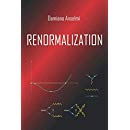Archive for September 2021
We prove spectral optical identities in quantum field theories of physical particles (defined by the Feynman $i\epsilon $ prescription) and purely virtual particles (defined by the fakeon prescription). The identities are derived by means of purely algebraic operations and hold for every (multi)threshold separately and for arbitrary frequencies. Their major significance is that they offer a deeper understanding on the problem of unitarity in quantum field theory. In particular, they apply to “skeleton” diagrams, before integrating on the space components of the loop momenta and the phase spaces. In turn, the skeleton diagrams obey a spectral optical theorem, which gives the usual optical theorem for amplitudes, once the integrals on the space components of the loop momenta and the phase spaces are restored. The fakeon
prescription/projection is implemented by dropping the thresholds that involve fakeon frequencies. We give examples at one loop (bubble, triangle, box, pentagon and hexagon), two loops (triangle with “diagonal”, box with diagonal) and arbitrarily many loops. We also derive formulas for the loop integrals with fakeons and relate them to the known formulas for the loop integrals with physical particles.
J. High Energy Phys. 11 (2021) 030 | DOI: https://doi.org/10.1007/JHEP11(2021)030
Extensions to the Standard Model that use strictly off-shell degrees of freedom – the fakeons – allow for new measurable interactions at energy scales usually precluded by the constraints that target the on-shell propagation of new particles. Here we employ the interactions between a new fake scalar doublet and the muon to explain the recent Fermilab measurement of its anomalous magnetic moment. Remarkably, unlike in the case of usual particles, the experimental result can be matched for fakeon masses below the electroweak scale without contradicting the stringent precision data and collider bounds on new light degrees of freedom. Our analysis, therefore, demonstrates that the fakeon approach offers unexpected viable possibilities to model new physics naturally at low scales.
Phys. Rev. D 104 (2021) 035009 | DOI: 10.1103/PhysRevD.104.035009
We introduce a new way of modeling the physics beyond the Standard Model by considering fake, strictly off-shell degrees of freedom: the fakeons. To demonstrate the approach and exemplify its reach, we re-analyze the phenomenology of the Inert Doublet Model under the assumption that the second doublet is a fakeon. Remarkably, the fake doublet avoids the most stringent $Z$-pole constraints regardless of the chosen mass scale, thereby allowing for the presence of new effects well below the electroweak scale. Furthermore, the absence of on-shell propagation prevents fakeons from inducing missing energy signatures in collider experiments. The distinguishing features of the model appear at the loop level, where fakeons modify the Higgs boson $h\rightarrow\gamma\gamma$ decay width and the Higgs trilinear coupling. The running of Standard Model parameters proceeds as in the usual Inert Doublet Model case. Therefore, the fake doublet can also ensure the stability of the Standard Model vacuum. Our work shows that fakeons are a valid alternative to the usual tools of particle physics model building, with the potential to shape a new paradigm, where the significance of the existing experimental constraints towards new physics must necessarily be reconsidered.
J. High Energy Phys. 10 (2021) 132 | DOI: 10.1007/JHEP10(2021)132

 Quantum Gravity
Quantum Gravity 


